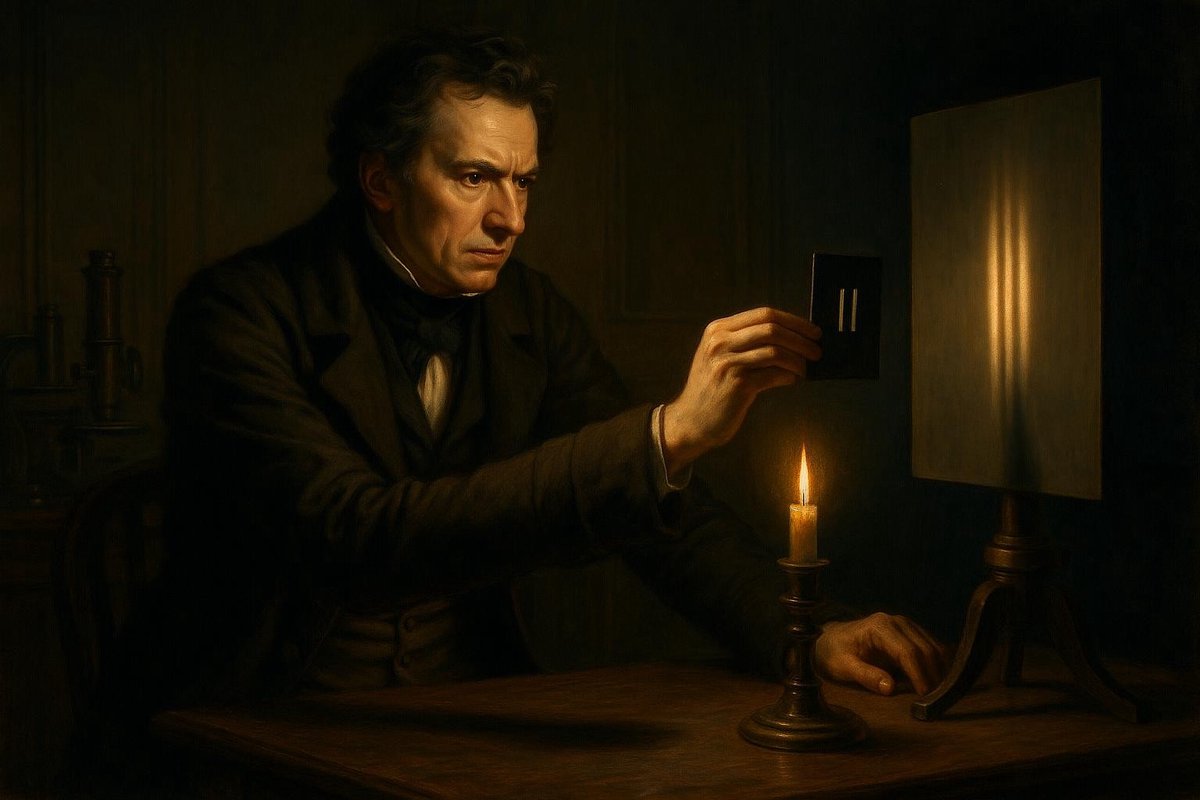
Understanding the Dual Nature of Light: Hypothesis & Context
Imagine the sun’s rays filtering through the branches of a tree, creating a dance of light and shadow. Many have wondered: is light a wave or a particle? This question puzzled scientists for centuries until Thomas Young embarked on a journey to unravel this mystery. His quest was not just a scientific challenge but a defiance of the status quo, questioning the long-held Newtonian view that light was merely a stream of particles.
In the early 19th century, the scientific world was steeped in Newton’s teachings. Isaac Newton had declared light to be composed of corpuscles, tiny particles that followed predictable paths. Yet, Young dared to propose something different. He believed that light could be a wave, like sound or water ripples.
- Young’s hypothesis challenged the particle theory, suggesting wave properties of light.
- He aimed to demonstrate interference patterns as evidence.
This revolutionary idea was met with skepticism. How could light, something so tangible, behave like an ethereal wave? The stage was set for a groundbreaking experiment.
The Experiment Unfolds: Setup & Method
Picture a dimly lit room in the heart of the Royal Institution in London. It’s 1801, and Young is preparing an experiment that would etch his name into the annals of scientific history. In this quiet room, he set up a simple yet ingenious apparatus.
Using a single light source, Young directed light onto a card with two closely spaced slits. On a screen behind the slits, he expected to see something extraordinary.
- A single light source illuminates a card with two slits.
- Light passing through these slits would hit a screen, creating patterns.
The setup was surprisingly straightforward, yet it held the key to unlocking the mystery. Young anticipated that, if light were a wave, it would create an interference pattern of alternating light and dark bands, much like ripples overlapping in water.
The Aftermath: Results & Reactions
The results were nothing short of astonishing. As the light passed through the slits, it spread out and formed a pattern of bright and dark stripes on the screen. This was clear evidence of interference, a hallmark of wave behavior.
Young’s findings sent shockwaves through the scientific community. Many were amazed, but others were skeptical, clinging to the comforting familiarity of Newton’s corpuscular theory.
- Interference patterns confirmed the wave nature of light.
- The experiment challenged the particle theory, sparking intense debate.
“The experiment is a triumph of ingenuity,” said one contemporary, yet detractors remained. Could Young’s simple demonstration overthrow decades of scientific tradition?
A New Paradigm: Implications
The implications of Young’s experiment were profound and far-reaching. It laid the groundwork for the wave theory of light, influencing future physicists like James Clerk Maxwell and Albert Einstein. It also set the stage for the development of quantum mechanics, a field that would forever change our understanding of the universe.
Young’s work demonstrated that light could behave as both a wave and a particle, a concept that forms the cornerstone of modern physics.
- Established the dual nature of light, influencing future scientific breakthroughs.
- Set a precedent for questioning and revising established scientific beliefs.
The double-slit experiment remains a pivotal demonstration of the strange, dual nature of reality, echoing through scientific debates and explorations even today.
Fuel Someone Else’s Curiosity
Thomas Young’s double-slit experiment reminds us of the power of curiosity and the courage to challenge established norms. Share this story with others and spark a discussion about the wonders of science and the relentless pursuit of knowledge. Who knows? Your curiosity might inspire the next great scientific breakthrough.

Leave a Reply